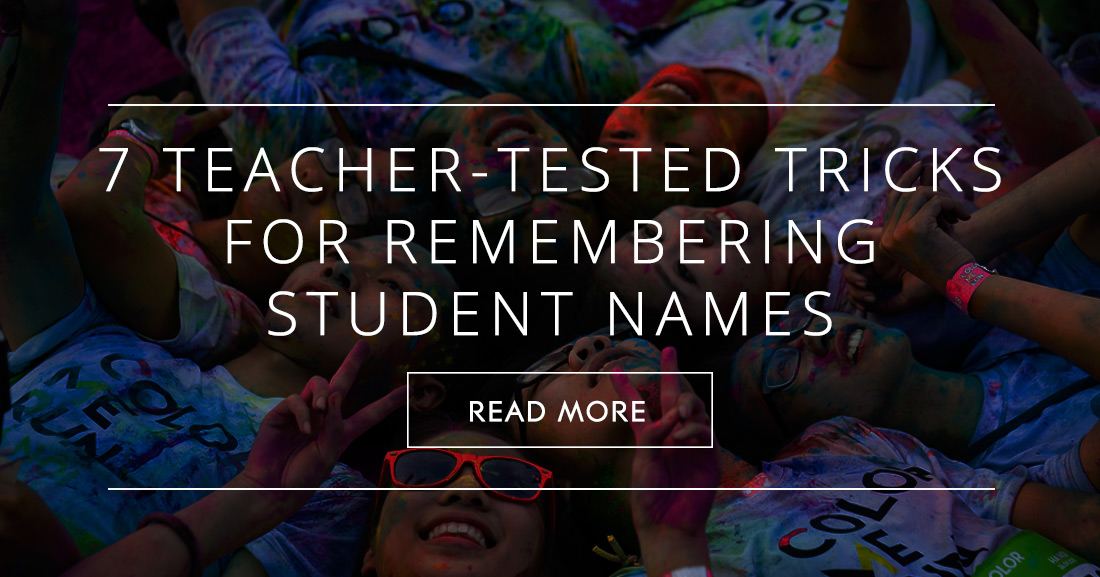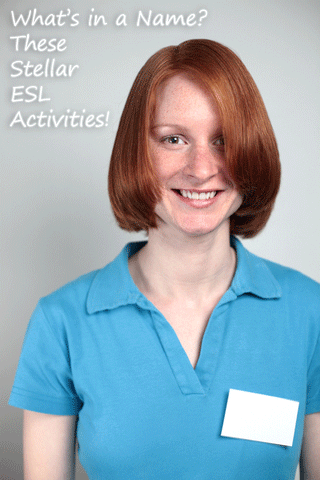7 Teacher Tested Tricks for Remembering Student Names


If there is one subject that all the students in your ESL class can relate to, it is the subject of names.
Everyone has at least one, often more, and although your students’ names will have different levels of meaning to them, all people connect with their own names to one degree or another.
The next time you are not quite sure what to cover with your ESL class or you are looking for a starting point for discussion, try starting with a name and see where it takes you!

A Delicate Question
ESL students are often asked to choose English names for themselves during their time in English classes. When a student travels overseas to study English, that class time encompasses nearly all of his time, especially if he also lives with an English-speaking host family. What does that mean, then, about the students’ given name? Should he forget it until his studies are done? Should he go by his given name rather than the adopted English one? Should the students in his class be expected to learn the names of their classmates when they are from every corner of the globe even though their intention is to study English? Have your students discuss the advantages and disadvantages to taking an English name for language studies. In small groups, ask students to make a list of the arguments on each side of the issue. Which side of the equation has stronger arguments? Since each of your students has some experience in the matter, what advice might they give to someone just starting his language studies? If choosing an English name is what a person decides to do, what criteria should he use when choosing his English name? To bring a practical side to the discussion, give your students a list of English names. You can find these in baby name books or online. Which names are most appealing to them? Which names are most popular?
City of a Thousand Names
One of the greatest honors a person can receive is to have a city named after him or her. There are examples all through the country and the world of cities that bear the names of important people. Among them are Baltimore, Houston, Charlotte, Pittsburgh, New York and Washington D.C. Challenge your students to think what a city named after them might be like. What kind of a city would it be? Would it me modern and streamlined or old and rustic? Highly populated and busy or quaint and scenic? Ask each of your students to describe this city that is named after her. After your students have spent some time thinking about their cities, show them this clip from The Big Bang Theory in which Sheldon talks about his Sim-City Sheldonopolis. What does your class think of Sheldonopolis? Did they imagine any similar features in their own city? Assign a small writing project to your students in which they describe the city that will be named after them. If you like, you can ask your students to draw a map to go along with their descriptions. Then display the map and the description side by side in your classroom for the other students to read at their leisure. You may want to title the bulletin board “Our Towns.”
To extend the activity, ask each person which fictional city named after a classmate they would like to visit for a weekend. Have each person make a vacation plan for a two-day trip to the chosen city. This plan should include the sights she would choose to visit in the city and any special activities she would do while in the city.
Names on the Darker Side
A name cannot only be famous, it can also be infamous. Such names send shivers down the spine, names like Jaws (from the James Bond series), Darth Vader (from the Star Wars saga), and Captain Hook (from Peter Pan). Even if you knew nothing about the characters, you could probably figure out that you would not want to meet them in a dark alley at night. What is it about the names themselves that make them perfect for villains? In this activity, you can challenge your students to come up with some rules for creating great villain names. Start by brainstorming a list of all the villains they can think of from television, movies or books. You can also check out a list of famous villains for more ideas. Then looking at your lists, set groups of students to decide what makes a great villainous name. The groups can use any criteria they like to make their decisions. When students feel comfortable with their analysis, challenge them to come up with several of their own villainous names. If possible, write out the names from every group on one long adding machine tape and post it along a nearby hallway. If you like, you can ask students to choose one villainous name and write a character sketch for him or her. Alternately, you could have pairs of students role-play interviews with one or more of the villains in front of the class. Once the descriptions are written, students can pair them with an illustration and display them near the ticker tape of bad guys. Title your wall, “Your school’s name’s most wanted.” You might also want to have your students come up with a list of crimes each character might be wanted for. Wrap up the activity by having your students vote on which villain is the vilest.
If you challenge your students to use their imaginations when it comes to their names, you may be surprised at whose names our world might know in the years to come!